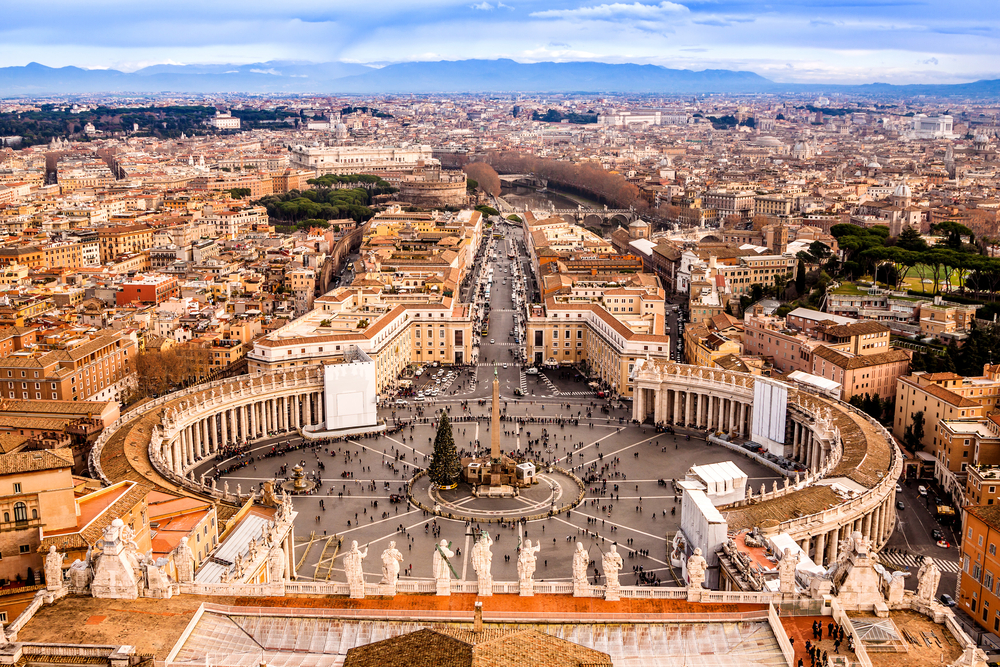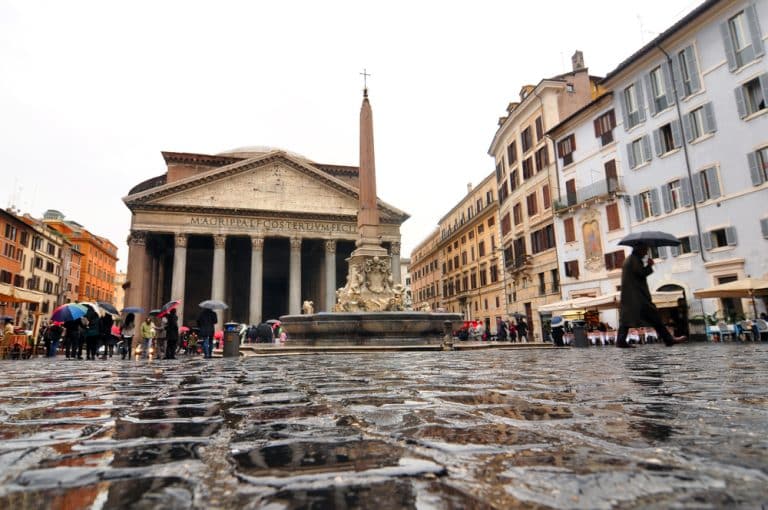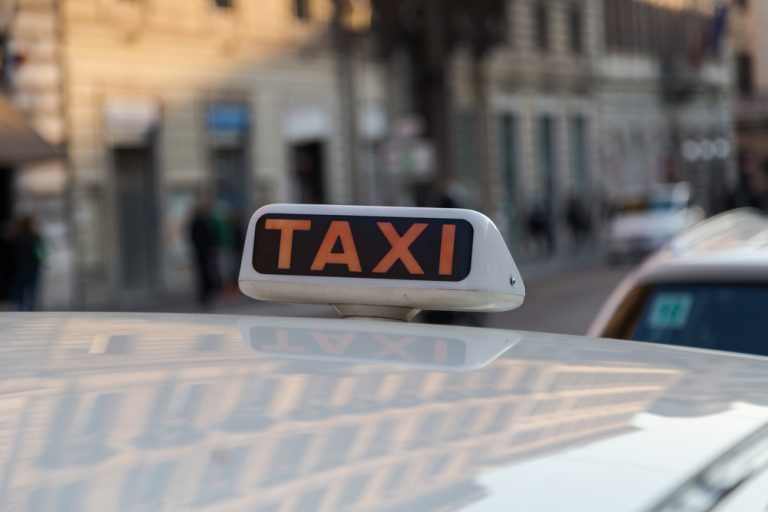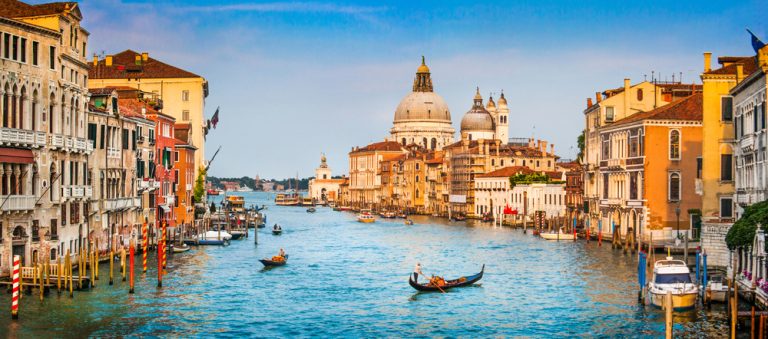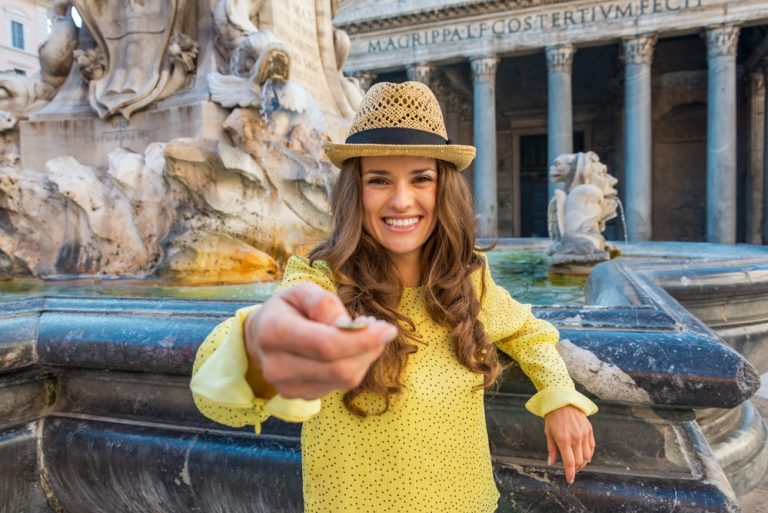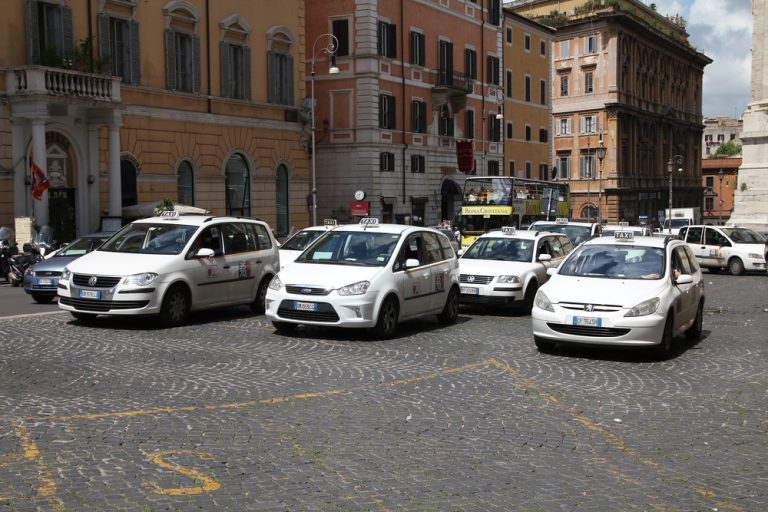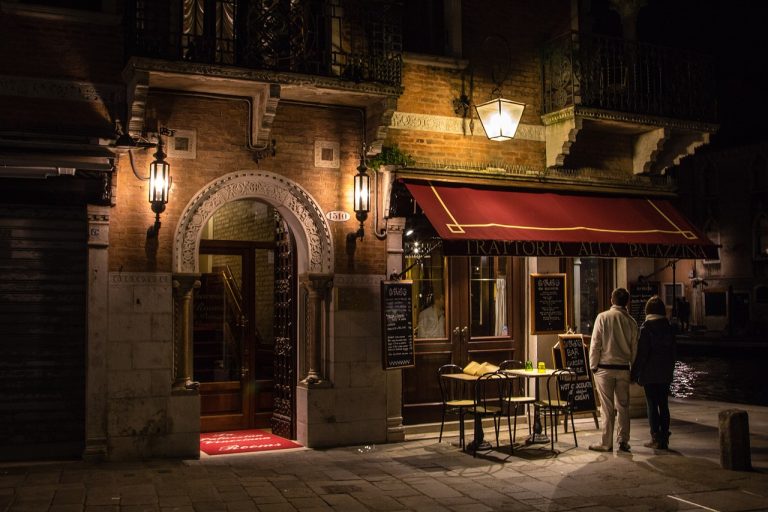Ultimate Guide to Rome’s Top Attractions: Tips, Timings, and Tickets
Ah, Rome! La città eterna. The city where time has seemingly stood still amidst the bustling espresso bars, Vespas whizzing by, and the ever-persistent allure of gelato on a hot afternoon.
Rome isn’t just another travel destination; it’s an immersive experience. A sprawling historical tapestry where every cobblestone whispers tales of emperors and gladiators, artists, and poets.
Erik here, your friendly travel aficionado and certified pasta aficionado. Now, before we dive deep into the top attractions of Rome, let me share a little secret:
Rome wasn’t built in a day, and well, neither should your exploration of it be. Sustainability is key! Let’s savor each site, not just check it off a list. By traveling sustainably, you’re not only doing the environment a favor but also truly engaging with the city’s rhythm.
And believe me, Rome has its unique rhythm, seasoned with laughter, a dash of chaotic traffic, and the melodious tones of Italian. But, più su questo più tardi (more on that later)!
For now, pull up your favorite chair, possibly accompanied by an espresso or, better yet, a glass of Chianti. Let’s embark on this Roman odyssey together.
And hey, if you feel a tad bit overwhelmed with all the wonders Rome offers, just take a deep breath and exclaim, “Mamma mia!” It’s scientifically proven to work wonders in Italy (not really, but let’s roll with it).
Ready? Andiamo!
Getting Around Rome: Navigating the Eternal City
Rome boasts an extensive public transportation system managed by ATAC, which includes buses, trams, metro lines, and regional trains. While it’s an ancient city with narrow streets and alleys, Rome’s public transportation is relatively efficient, complemented by a fleet of taxis and the city’s innate walkability.
- Buses:
- Rome’s bus network is extensive and serves areas that aren’t accessible by the metro. The buses can be crowded during rush hours but are generally reliable.
- Night buses operate after midnight, covering major routes.
- Trams:
- Trams mostly serve areas outside the historical center. They can be a good option if you’re traveling to outlying neighborhoods.
- Metro:
- The metro system has three lines: A (orange), B (blue), and C (green). They are the fastest means of public transport, covering major tourist attractions like the Colosseum, Spanish Steps, and Vatican City.
- Operating hours are generally from 5:30 am to 11:30 pm (until 1:30 am on Fridays and Saturdays).
- Taxis:
- Official Roman taxis are white with a “TAXI” sign on top. They operate with a meter, and it’s recommended to ensure the meter is running when you start your journey.
- Ride-sharing services, like Uber, also operate in Rome but might be pricier than standard taxis.
- Walking:
- Rome is a city best experienced on foot. Many of its iconic landmarks are within walking distance of each other, especially in the historic center.
Tips for Purchasing Tickets & Using Public Transport
- Tickets:
- Single-journey tickets, 24-hour, 48-hour, 72-hour, and 7-day passes are available. These can be used on buses, trams, and metro.
- Tickets can be purchased from ticket machines at metro stations, tabacchi (tobacconist shops), and some newsstands.
- Validation:
- Before boarding a bus or tram or entering the metro, make sure to validate your ticket in the yellow machines. On buses and trams, these machines are inside the vehicle, while in metro stations, they are at the entrance.
- Failure to validate might result in a fine if inspected.
- Metro Tips:
- Be wary of pickpockets, especially during rush hours.
- While metro lines are limited, they connect major tourist destinations and are often the fastest way to travel long distances.
- Bus and Tram Tips:
- Buses might be slower due to Rome’s traffic. Always account for potential delays if you have a tight schedule.
- Routes and schedules are available on the official ATAC website or through various mobile apps.
- Taxi Tips:
- Always use official taxis to avoid scams. Fixed rates are available for journeys to and from the airport.
- If you’re using ride-sharing services, ensure you’re getting into the correct vehicle by verifying the driver’s name and car details.
- Walking Tips:
- Wear comfortable shoes, as Rome’s cobbled streets can be uneven.
- Carrying a map or having a map app on your phone can be very helpful. While getting lost in Rome’s charming streets can be an adventure, you might not want to stray too far off your intended path.
With a bit of planning and understanding of the transportation system, getting around Rome can be a smooth experience, allowing you to soak in the city’s rich history and vibrant culture.
The Colosseum: A Dive into Rome’s Gladiatorial Heartbeat
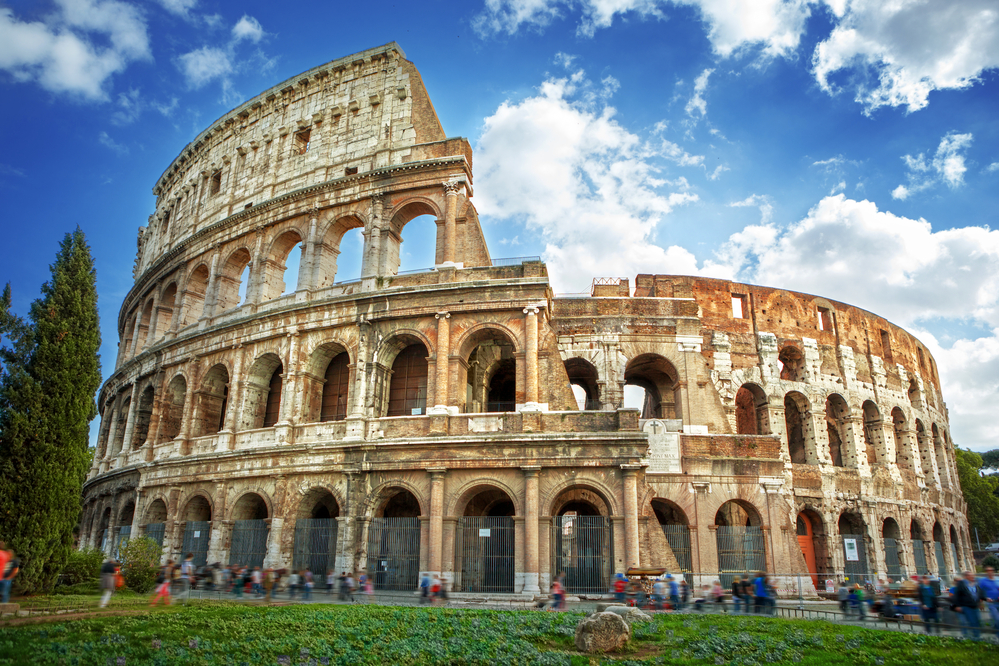
Bellissimo! When in Rome, the Colosseum isn’t just a monument, it’s an emotion. Standing tall amidst the modernity of the city, this architectural marvel is a testament to Rome’s golden days, tales of valiant gladiators, and a society that thrived on grandeur. If there’s one thing every visitor to Rome should tick off their bucket list, it’s witnessing the magnificence of this iconic amphitheater.
Tickets:
Now, let’s talk practical. Adult tickets to the Colosseum will run you €15, with discounted rates for children and groups at €7. Fancy a more in-depth Roman experience? Opt for combo deals that allow you to explore the Roman Forum and Palatine Hill too for €18. While you can snag tickets on-site, why wait in the Italian sun? Booking online is your hassle-free ticket (pun intended) to ancient Rome.
Luggage Storage:
Traveling heavy? The Colosseum’s got your back. While oversized luggage isn’t allowed inside, there’s a luggage storage facility at a nominal fee of €5. Why drag your bags through ancient ruins when you can explore freely? Trust me, your shoulders will thank you later.
Opening Hours:
The Colosseum graciously welcomes visitors from 8:30 am to 7:00 pm. However, remember Rome’s love for festivities; the timings might vary based on seasons and special events. Do a quick check before planning your visit.
Pre-purchase Tips:
Here’s a little gold nugget from Erik’s treasure trove: Buy your tickets ahead of time. Not only does it save time, but it also ensures you’re not left in despair when tickets run out during peak seasons. Stick to trusted websites or authorized dealers, and you’re all set.
Dodging the Crowd:
Ah, the sweet charm of an almost-empty Colosseum! Aim for the shoulder seasons (late fall or early spring) or early mornings for a quieter experience. And for those looking to truly play Emperor for a day, “skip the line” tickets are your chariot to glory.
Facilities & Accessibility:
Restrooms? Check. Baggage storage? Check. Elevator for our differently-abled friends? Double check. The Colosseum, despite its age, caters to the modern traveler quite effectively.
Dress Code:
While there’s no religious dress code, it’s Italy folks! A tad bit of flair never hurts. But remember, comfort over style any day. Those cobblestones are unforgiving.
Photography Rules:
Capture memories but leave the flash behind. While photography is permitted, tripods and flash can be a bother to others. Snap responsibly!
Food & Drink:
Hungry after your Colosseum adventure? The vicinity offers an array of eateries, from quick bites to leisurely Roman feasts. And when in Rome, do as the Romans do – gelato is a must!
Transport:
Metro stations are just a stone’s throw away, with bus routes aplenty. If driving, there’s parking nearby. But honestly? Rome’s beauty is best explored on foot.
Medical Facilities:
Stay safe, but know that pharmacies and first-aid centers are close by. Always handy to have emergency numbers at your fingertips.
WiFi Access:
Free WiFi? Si! The Colosseum knows the modern traveler’s needs. Quick registration, and voilà, share those gladiator selfies away!
Average Visit Duration:
A thorough Colosseum exploration can run you about 2-3 hours. But, hey, who’s counting?
Payment Modes:
Cash, cards, or digital wallets – the Colosseum is versatile. And if you’re short on euros, ATMs are nearby.
General Tips:
Consider a guided tour or a nighttime visit for a unique perspective. And here’s Erik’s golden tip: wear comfy shoes, stay hydrated, and always, always make time for pizza (or pasta).
Pronto to speak a little Italiano? “Quanto costa?” (How much does it cost?) and “Dove si trova il bagno?” (Where is the restroom?) might come in handy. Use them, chuckle a little, and immerse yourself in the Roman spirit.
The Roman Forum: Ancient Rome’s Vibrant Epicenter
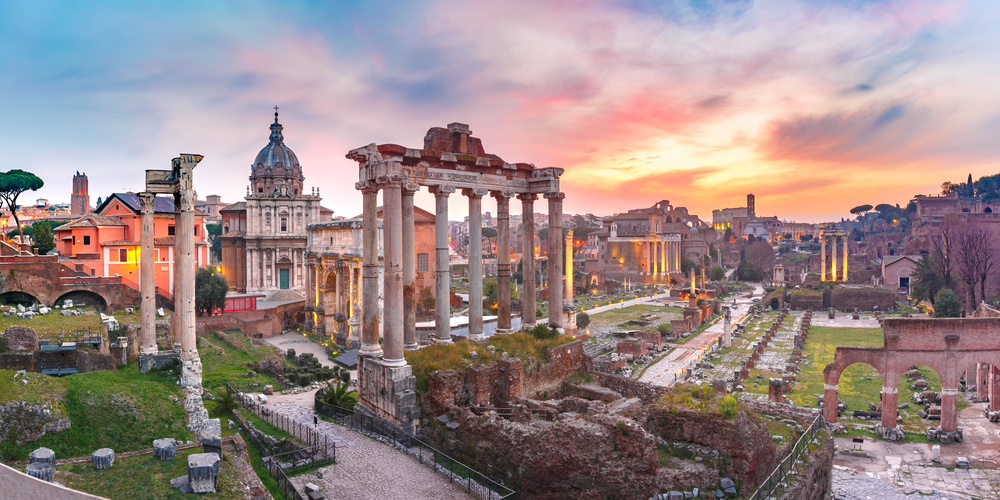
Overview:
The Roman Forum isn’t just ruins; it’s the very soul of ancient Rome. Once the bustling heart of a great empire, this sprawling complex witnessed grand ceremonies, legendary speeches, and the daily lives of the Roman elite. Dive into the history and marvel at the ancient engineering. Every step you take echoes the decisions, debates, and dreams of emperors, senators, and commoners alike.
Tickets:
General admission for adults usually costs €12. Children and groups often get discounted rates. Are you a history buff? Consider combo deals that include the Palatine Hill for €16. Tickets are available at the venue, but to beat the queues, go online.
Luggage Storage:
The Roman Forum advises against bringing large luggage. There are storage facilities available at a cost, typically around €5. Store your bags, and let the only weight you carry be the weight of history.
Opening Hours:
Typically, the Forum is open from 8:30 am to 7:00 pm. But do check beforehand, as timings can vary seasonally or due to special events.
Pre-purchase Tips:
Purchase your tickets in advance to avoid disappointments, especially during peak seasons. Always use trusted websites or official channels for your bookings.
Dodging the Crowd:
Visit during late fall or early spring for a less crowded experience. Early mornings are also quieter. If you’re not a fan of waiting, there are “skip the line” options available.
Facilities & Accessibility:
The Forum, though ancient, is equipped with modern facilities like restrooms and luggage storage. Note that certain areas might be challenging for differently-abled visitors due to the uneven terrain.
Dress Code:
There’s no religious dress code. However, it’s Rome; a blend of comfort and style won’t hurt. Don’t forget to wear good walking shoes.
Photography Rules:
Photography for personal use is generally allowed. However, commercial shoots, tripods, and flash might be restricted.
Food & Drink:
While the Forum itself doesn’t house eateries, the surrounding area is brimming with options. From quick snacks to lavish Italian meals, Rome has your cravings covered.
Transport:
The Colosseo metro station is your closest stop. Numerous buses also ply nearby. Parking can be a challenge; perhaps a pleasant walk is a better choice.
Medical Facilities:
There are pharmacies and basic medical facilities nearby. It’s wise to have a list of emergency numbers just in case.
WiFi Access:
There might be limited free WiFi access points in the vicinity, but it’s best not to rely solely on them.
Average Visit Duration:
Give yourself a good 2-3 hours to truly soak in the essence of the Forum.
Payment Modes:
The Roman Forum accepts most forms of payment, including cash, cards, and some digital wallets. There are ATMs in the vicinity if needed.
General Tips:
Consider hiring a guide or grabbing an audio guide to enrich your visit. The Forum’s stories are best understood with context. Comfort is key: wear appropriate shoes, carry water, and make sure to pause and appreciate the magnificence around you.
Vatican City: The Spiritual Heartbeat of the Catholic World
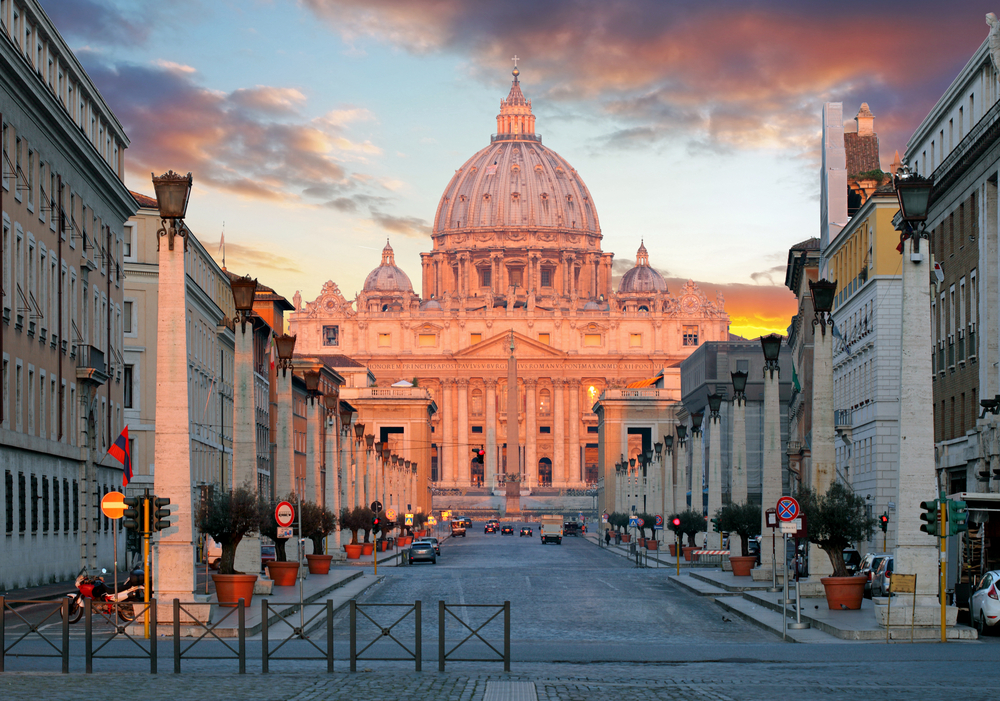
Overview: Vatican City, the smallest sovereign state in the world, is an emblem of deep-rooted faith and unparalleled religious history. Home to the Pope, this enclave within Rome is not just a spiritual hub but also an architectural masterpiece. With landmarks such as St. Peter’s Basilica and the Sistine Chapel, a visit to Rome is incomplete without exploring Vatican City.
Tickets: Ticket prices vary, but standard adult admission to the Vatican Museums is around €17. Children and groups may avail discounts. Often, you’ll find combo deals that include guided tours of various parts of the Vatican. Buying online is the preferred method to avoid long lines.
Luggage Storage: Large bags, backpacks, and umbrellas are not allowed inside the Vatican Museums. There are free luggage storage facilities at the entrance. Lighten your load to enhance your experience.
Opening Hours: The Vatican Museums are generally open from 9:00 am to 6:00 pm, but times can vary, especially on Sundays and religious holidays. Always check the official calendar.
Pre-purchase Tips: Avoid scams and buy tickets only from the Vatican’s official website or recognized tour operators.
Dodging the Crowd: The Vatican is always bustling. However, early mornings or late afternoons, and the off-peak months of January and February, tend to be less crowded. “Skip the line” tickets are a blessing during peak seasons.
Facilities & Accessibility: Toilets and baby changing facilities are scattered throughout. While the Vatican is accessible to differently-abled visitors, some areas might be challenging due to the age of the structures.
Dress Code: Modesty is key. Shoulders and knees should be covered. No hats inside sacred places.
Photography Rules: Photography for personal use is allowed, but flash and tripods are prohibited, especially in the Sistine Chapel.
Food & Drink: The Vatican Museums have a few cafeterias. However, for a more local experience, venture outside into Rome’s charming streets.
Transport: Ottaviano is the nearest metro station. Buses 32, 49, 81, and others stop nearby. Parking in Vatican City can be a challenge; consider public transport or walking.
Medical Facilities: There’s a pharmacy inside Vatican City. Always handy to have emergency numbers.
WiFi Access: Limited free WiFi zones are present, especially near the main facilities.
Average Visit Duration: You’d need at least half a day to truly appreciate the wonders of Vatican City.
Payment Modes: Most places within the Vatican accept cash and cards. There’s also an ATM with instructions in Latin (for fun)!
General Tips: Consider hiring a guide to fully understand the deep history. Wear comfortable shoes; there’s a lot to explore! Stay hydrated, especially during the Roman summer. And always, take a moment to appreciate the spiritual aura that envelopes this tiny yet powerful city.
St. Peter’s Basilica
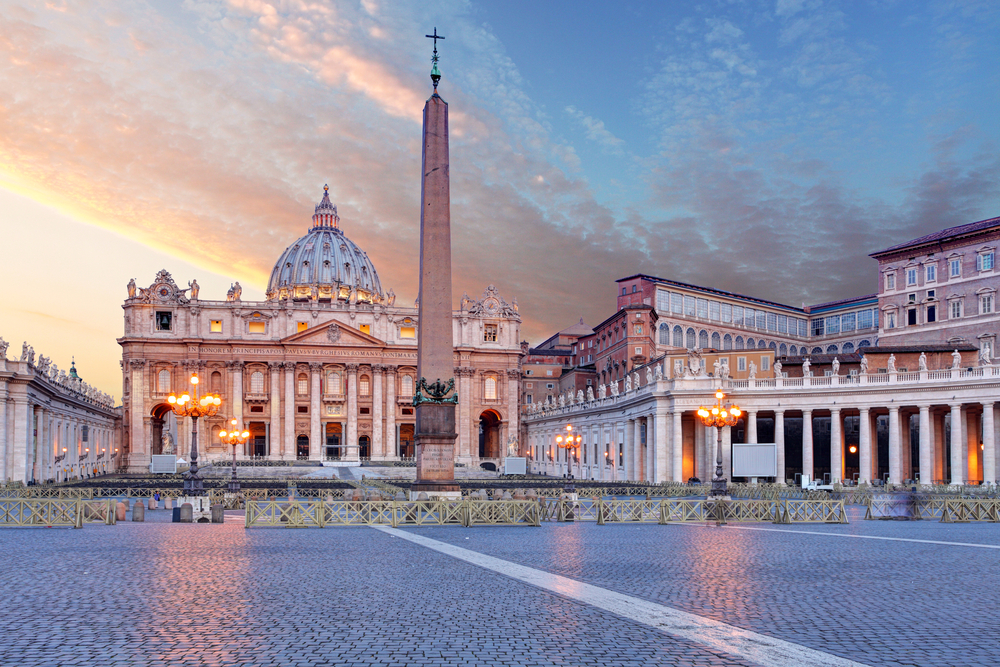
Overview: St. Peter’s Basilica, situated in the heart of Vatican City, stands as a beacon of Catholicism and is an embodiment of Renaissance architecture. The church’s majestic dome, designed by Michelangelo, dominates the skyline of Rome. Every corner of this colossal basilica tells a story of faith, art, and history, making it a must-visit for anyone journeying to Rome.
Tickets: Entry to St. Peter’s Basilica is free. However, there are charges to climb the dome: approximately €8 for the elevator and €6 if you choose the stairs. Combo deals may be available with Vatican Museums or guided tours. It’s advisable to purchase dome tickets or tour tickets online to avoid queues.
Luggage Storage: Bags larger than 40x35x15 cm are not allowed. Free storage facilities are available near the entrance.
Opening Hours: Generally open from 7:00 am to 7:00 pm in summers and till 6:00 pm in winters. However, timings may vary on religious holidays or occasions.
Pre-purchase Tips: Opt for official Vatican websites or authorized tour agencies to buy tickets or book guided tours.
Dodging the Crowd: Mornings are usually less crowded. The period between November and April (excluding Christmas) is less touristy.
Facilities & Accessibility: Restrooms are available in the vicinity. While most of the basilica is accessible, some areas might be a challenge for differently-abled visitors due to the age of the structure.
Dress Code: Dress modestly. Shoulders and knees should be covered. Sleeveless shirts, miniskirts, hats, and shorts are not permitted.
Photography Rules: Photography is allowed, but flash and tripods are prohibited. Respect the sanctity of the place, especially during Mass.
Food & Drink: There are no food stalls within the Basilica. Numerous eateries are situated around Vatican City.
Transport: Ottaviano is the nearest metro station. Buses 64, 60, and 40 are convenient options. Parking nearby is limited; public transport is recommended.
Medical Facilities: Pharmacies are located outside the Vatican walls in Rome. Always handy to have emergency numbers when traveling.
WiFi Access: Limited free WiFi might be available in areas around St. Peter’s Square.
Average Visit Duration: Approximately 1 to 3 hours, depending on interest and if you’re climbing the dome.
Payment Modes: Inside the Basilica, only cash is accepted for services like dome access. ATMs are found around St. Peter’s Square.
General Tips: Guided tours offer rich insights into the Basilica’s history. Wear comfortable shoes, especially if you’re climbing the dome. Stay hydrated. Take a moment to participate in a Mass service if possible; it’s a unique experience irrespective of religious beliefs.
Sistine Chapel
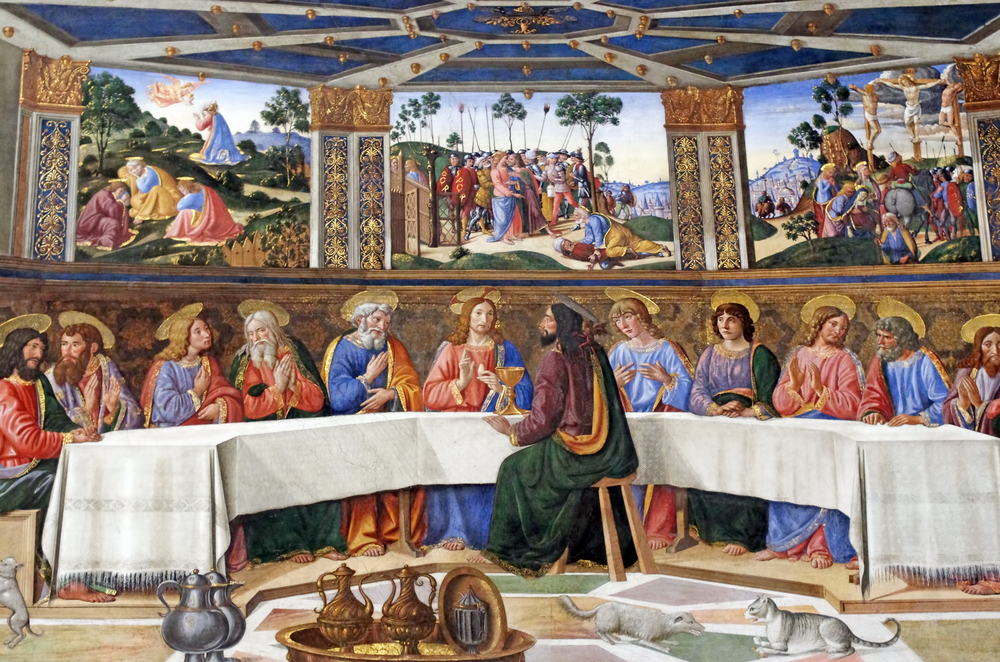
A celestial blend of art and history, where Michelangelo’s masterpieces beckon from above.
Pompeii Luggage Storage Guide: Tips and Facilities for Tourists(Opens in a new browser tab)
Overview: Situated within the Vatican Museums, the Sistine Chapel is the epitome of Renaissance art. Michelangelo’s ceiling frescoes, alongside masterpieces from other great artists, make the chapel an irreplaceable treasure. It’s not just an art sanctuary; it’s where Papal conclaves occur. Anyone visiting Rome should not miss this emblem of artistry and spirituality.
Tickets: Entrance to the Sistine Chapel is covered by the Vatican Museums ticket. Adult tickets are usually around €17; various discounts available for children, students, and seniors. Combo deals might include tours of other Vatican landmarks. Tickets can be bought on-site but purchasing online is recommended to avoid long queues.
Luggage Storage: Bags, backpacks, and umbrellas larger than 40x35x15 cm are not allowed. A free cloakroom is available at the entrance of the Vatican Museums.
Opening Hours: Typically from 9:00 am to 6:00 pm, with the last entrance at 4:00 pm. The chapel and museums are closed on Sundays, except the last Sunday of the month (free entry). Note: hours can change due to Vatican activities.
Pre-purchase Tips: Buy tickets from the official Vatican Museums website or reputable tour operators. Advance tickets help skip long ticket queues.
Dodging the Crowd: Earlier in the morning or late afternoon are the best times. Off-peak seasons like November to February see fewer crowds.
Facilities & Accessibility: Restrooms and cloakrooms are located near the entrance of the Vatican Museums. The museums and chapel are wheelchair accessible.
Dress Code: A strict dress code is enforced: shoulders and knees must be covered for both men and women. Sleeveless shirts, shorts, and short dresses are not allowed.
Photography Rules: Photography and videography, including with mobile phones, are strictly prohibited in the Sistine Chapel. However, photography (without flash) is allowed in other parts of the Vatican Museums.
Food & Drink: While there’s a cafe within the Vatican Museums, food and drinks are not allowed inside the chapel. Numerous eateries are situated outside the Vatican City.
Transport: Ottaviano and Cipro are the nearest metro stations. Buses 49, 32, 81, and 982 stop nearby. Limited parking spaces are available near the Vatican Museums.
Medical Facilities: Pharmacies are located outside the Vatican walls in Rome. It’s advisable to note down emergency numbers when in Rome.
WiFi Access: Limited free WiFi is available within the Vatican Museums.
Average Visit Duration: To truly appreciate, expect to spend at least 20-30 minutes in the chapel. However, the surrounding museums can take 3-4 hours or more.
Payment Modes: Inside the Vatican Museums, cash, credit cards, and major digital wallets are accepted. ATMs are located around Vatican City.
General Tips: While it’s tempting to rush through the museums to get to the chapel, take your time to appreciate the vast collection. Wear comfortable footwear, as there’s a lot of walking. Guided tours are invaluable for the insights they provide. Remember to maintain silence in the chapel and absorb the ethereal ambiance.
Trevi Fountain
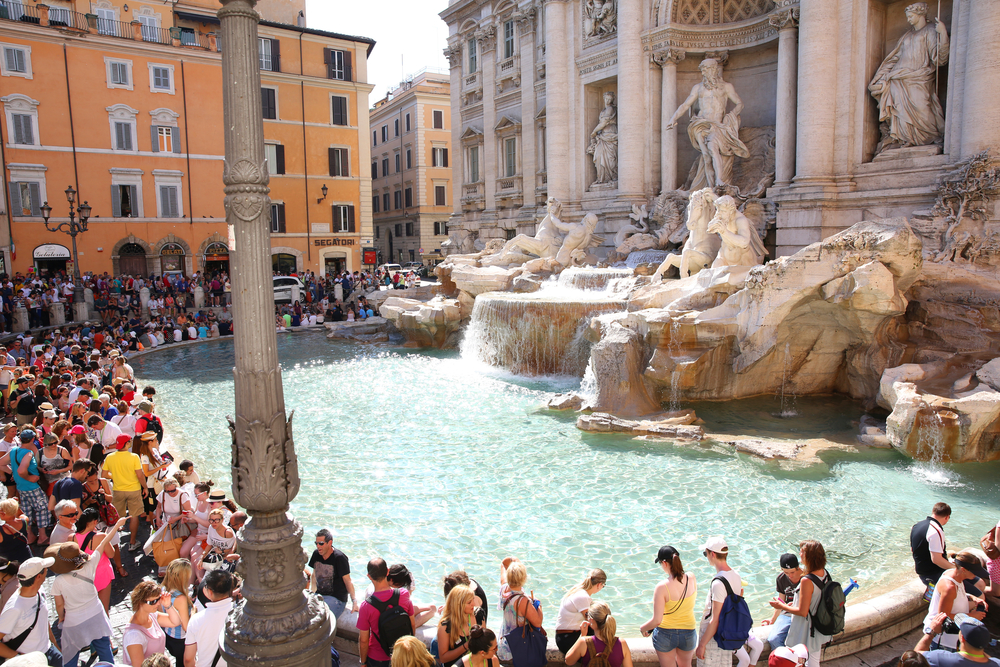
A legendary fountain that encapsulates the romance of Rome, known worldwide for its tradition of coin-tossing.
Overview: Designed by Nicola Salvi in the Baroque style, the Trevi Fountain is a testament to Rome’s rich history and love for art. Depicting Neptune, the god of the sea, it’s not just a fountain but a vibrant tale sculpted in stone. For anyone in Rome, a visit to the Trevi ensures memories for a lifetime, and perhaps a return trip, if the coin-tossing legend is to be believed.
Tickets: No ticket is required to view the fountain. It’s open to the public.
Luggage Storage: Large bags and luggage are discouraged due to the crowded nature of the area. Nearby hotels or storage centers in Rome offer luggage storage services for a fee.
Opening Hours: Being an open-air monument, the fountain is accessible 24/7. However, it’s best viewed during daylight hours or early evening when it’s illuminated.
Pre-purchase Tips: Not applicable as no tickets are needed.
Discover the Perfect Stay: Recommended Hotels in Naples, Italy(Opens in a new browser tab)
Dodging the Crowd: Visit early in the morning or late evening to avoid peak tourist times. Mid-week visits also tend to be less crowded.
Facilities & Accessibility: While there aren’t facilities directly at the fountain, nearby streets have cafes and shops. The fountain area is flat and easily accessible.
Dress Code: No specific dress code, but always be respectful as it’s a frequented spot by both tourists and locals.
Photography Rules: Photography is allowed, but tripods might be an inconvenience during crowded hours. Using flash is permissible.
Food & Drink: There are numerous cafes, gelaterias, and restaurants in the vicinity of the fountain, offering Italian delicacies.
Transport: The closest metro station is Barberini. Numerous buses stop nearby. Due to its central location, many visitors prefer walking. Limited parking is available in the area.
Medical Facilities: There are pharmacies located in nearby streets. It’s wise to have emergency contact numbers when touring Rome.
WiFi Access: No dedicated WiFi at the fountain. However, some nearby cafes and restaurants might offer free WiFi.
Average Visit Duration: Around 20-30 minutes should be sufficient, but it depends on personal preferences and crowd levels.
Payment Modes: Nearby shops and restaurants accept cash, credit cards, and popular digital wallets. Several ATMs are located in adjacent streets.
General Tips: Tossing a coin over your left shoulder with your right hand ensures a return trip to Rome. It’s a must-try ritual. Evening views with lights are enchanting. As it can get crowded, keep an eye on personal belongings to avoid pickpockets. Comfortable shoes are a must, as you might need to stand a while to get a good view or photo.
Spanish Steps
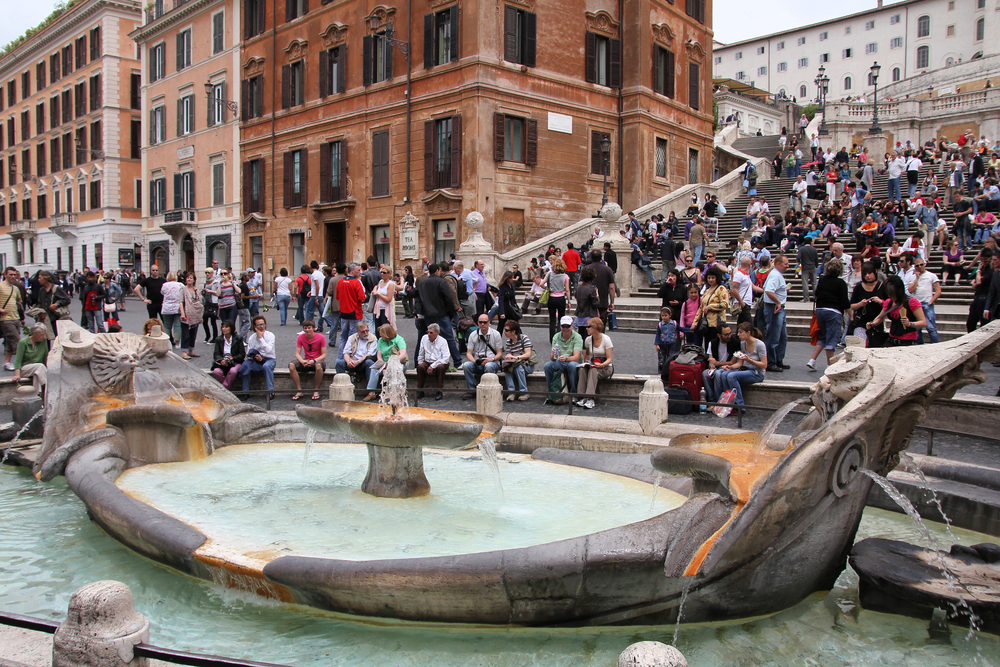
Rome’s famous staircase, connecting the Piazza di Spagna at the base with Piazza Trinità dei Monti at the top, and providing a picturesque setting for locals and tourists alike.
Overview: Designed by architects Francesco de Sanctis and Alessandro Specchi, the Spanish Steps aren’t just a staircase but a meeting spot, an artist’s muse, and an embodiment of Roman Baroque style. Climbing the steps offers a scenic view of Rome’s city center, making it a must-visit for every traveler.
Tickets: The Spanish Steps are freely accessible, and no tickets are required.
Luggage Storage: Large bags or luggage aren’t suitable due to the nature of the steps and often crowded area. There are luggage storage centers in Rome’s central areas, for a fee.
Opening Hours: The Steps are open-air and can be accessed 24/7. Best viewed during daylight.
Pre-purchase Tips: Not applicable as there’s no ticketing system.
Dodging the Crowd: Visiting early morning or late evening can help avoid peak tourist times. Off-peak seasons like late fall or early winter see fewer tourists.
Facilities & Accessibility: Nearby streets have numerous shops, cafes, and facilities. The steps might pose challenges for differently-abled visitors, and there’s no elevator.
Dress Code: Casual attire is suitable, though being a frequented spot, dressing modestly is advised.
Photography Rules: Photography is allowed. However, tripods can be cumbersome during crowded times. Flash is permissible.
Food & Drink: Surrounding areas boast an array of cafes, gelaterias, and restaurants offering Roman and international delicacies.
Transport: The closest metro station is Spagna. Numerous buses service nearby routes. Walking from nearby attractions is also popular. Limited parking options available.
Medical Facilities: There are several pharmacies in the surrounding areas. Always keep emergency contact numbers handy when touring.
WiFi Access: No dedicated WiFi at the steps. Nearby cafes and restaurants might offer WiFi services.
Average Visit Duration: 30 minutes to an hour, depending on personal preferences and time spent enjoying the view and ambiance.
Payment Modes: Shops and eateries around accept cash, credit cards, and popular digital wallets. ATMs are located in adjacent streets.
General Tips: Sitting on the steps was prohibited in 2019, so be sure to respect local regulations. Evening offers a romantic setting with the steps illuminated. Comfortable shoes are recommended, given the number of steps. The nearby Villa Medici and Trinità dei Monti church can be combined with your visit to the Steps.
Piazza Navona
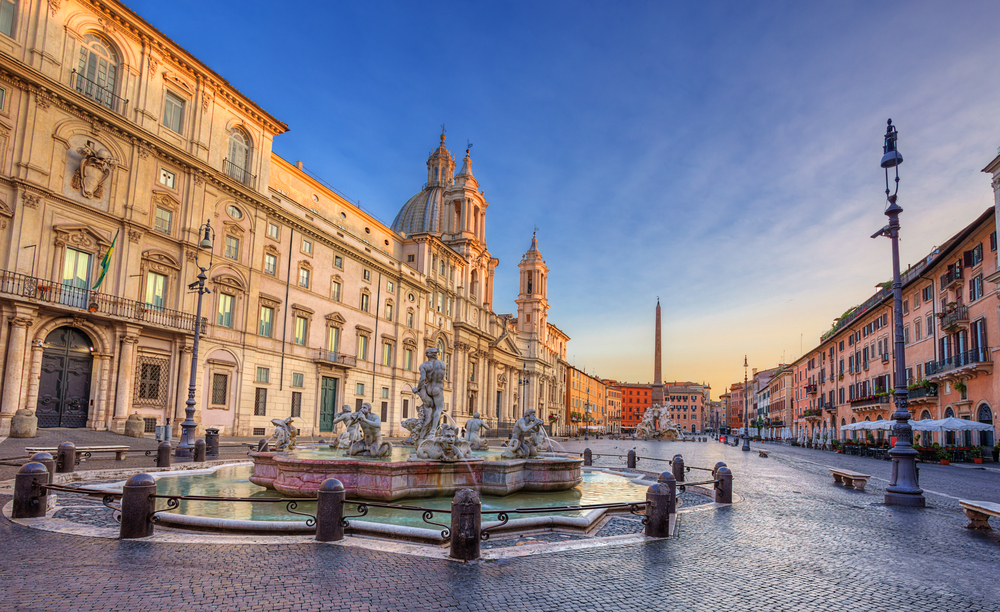
A splendid example of Baroque Roman architecture and art, this public square is teeming with history, art, and life, making it a staple in Roman culture.
Overview: Originally built as a stadium in the 1st century AD by Emperor Domitian, Piazza Navona later transformed into a significant example of Baroque Roman architecture and art in the 17th century. The square is famous for its three fountains: Fontana dei Quattro Fiumi (Fountain of the Four Rivers) by Gian Lorenzo Bernini, Fontana del Moro, and Fontana di Nettuno. It’s a focal point of Roman life with artists, performers, and an array of cafes and restaurants.
Tickets: Piazza Navona is a public square, so no tickets are required for entry.
Luggage Storage: Large bags or luggage might be cumbersome in a bustling area. Nearby luggage storage centers in Rome offer services for a fee.
Opening Hours: Being an open public square, Piazza Navona can be accessed 24/7. Fountains and statues are best viewed during daylight.
Pre-purchase Tips: No tickets required for the square itself. However, events occasionally held at Piazza Navona might have ticketing.
Dodging the Crowd: Early mornings or late evenings are less crowded. Late spring and early fall are ideal times for a visit.
Facilities & Accessibility: The square is flat and easily accessible. Numerous cafes and eateries border the square. Public restrooms might be limited, but facilities are available in restaurants and cafes.
Dress Code: Casual attire is suitable. Dress modestly if you plan to visit any nearby churches.
Photography Rules: Photography is permitted. Tripods might be cumbersome during busy hours, and drones typically require permissions.
Food & Drink: Piazza Navona is surrounded by several cafes, gelaterias, and restaurants where you can savor Roman and Italian cuisine.
Transport: While there’s no direct metro, the closest stations are Barberini or Spagna. Several buses have stops near the square. Walking is also an option from other central attractions.
Medical Facilities: Pharmacies are found in nearby streets. Remember to have a list of emergency numbers for safety.
WiFi Access: Certain cafes and restaurants offer WiFi, but there’s no public WiFi dedicated to the entire square.
Average Visit Duration: 1-2 hours, depending on personal preferences and time spent dining or relaxing.
Payment Modes: Nearby establishments typically accept cash, credit cards, and some digital wallets. ATMs are accessible in the vicinity.
General Tips: While the daytime captures the square’s historical essence, evenings bring out a romantic ambiance, perfect for couples. Comfortable footwear is recommended as you might end up walking and exploring the area. Always be wary of pickpockets in crowded areas.
Castel Sant’Angelo
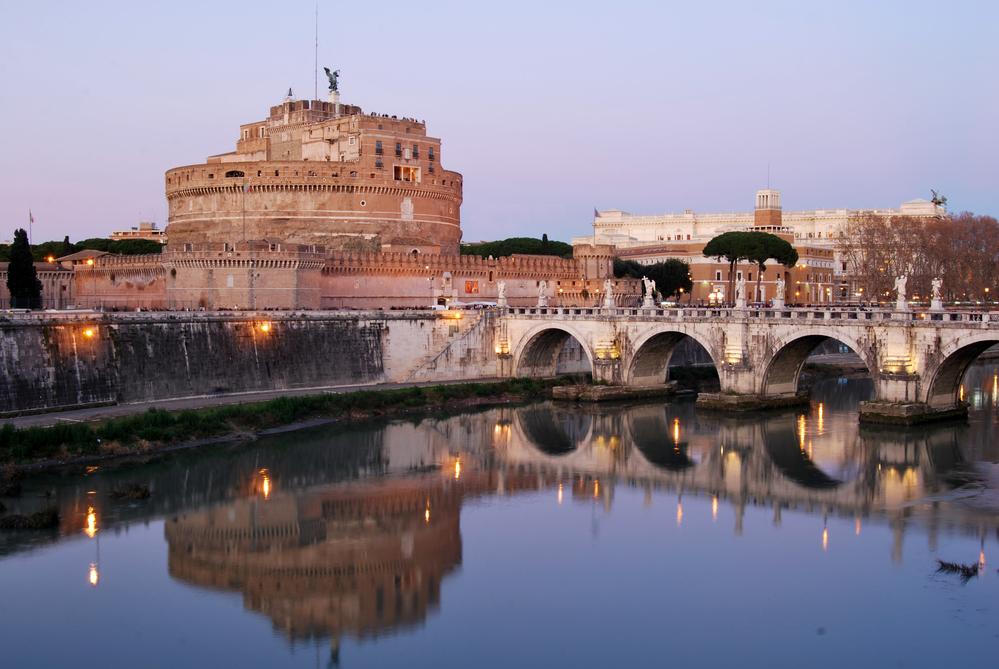
A towering cylindrical structure on the banks of the Tiber, this monument has evolved from a mausoleum to a papal fortress, offering stunning views of Rome from its terrace.
Overview: Built initially as a mausoleum for Emperor Hadrian and his family in 139 AD, Castel Sant’Angelo later served various purposes, from a military fortress to a papal residence. The structure is famously linked to St. Peter’s Basilica by the Passetto, a hidden corridor used by popes in times of danger. Its rich history and impressive architecture make it a must-visit.
Tickets: Ticket prices vary, with discounts for students, seniors, and children. Combo deals might be available with nearby attractions. Tickets can be purchased on-site or online from the official website or trusted tour operators.
Luggage Storage: Large bags and luggage are not permitted inside. Storage facilities are available at the entrance for a fee.
Opening Hours: Typically open from 9 AM to 7:30 PM, but timings might vary seasonally. Check the official site or inquire ahead for special event or maintenance closures.
Pre-purchase Tips: Buying tickets online can help avoid long queues, especially during peak seasons. Look for authorized dealers or the official website for genuine tickets.
Dodging the Crowd: The best time to visit would be during the early morning or late afternoon. Late fall and winter months tend to be less crowded.
Facilities & Accessibility: Restrooms and a café are located within the premises. The castle is mostly accessible, though some areas might be challenging for differently-abled visitors. Elevators are available for certain sections.
Dress Code: Casual attire is acceptable. However, as always in Rome, modest dress is appreciated.
Photography Rules: Photography for personal use is permitted, but tripods may be restricted. Flash photography could be limited inside to preserve artifacts.
Food & Drink: There’s a café inside offering refreshments and light snacks. Many restaurants and cafes are also available in the vicinity.
Transport: Closest metro station is Ottaviano. Several bus routes pass nearby. Limited parking is available in the area, so public transport or walking is recommended.
Medical Facilities: Pharmacies can be found around the vicinity. Always have emergency contact numbers handy.
WiFi Access: Limited free WiFi might be available in certain sections of the castle.
Average Visit Duration: Approximately 2-3 hours.
Payment Modes: Cash, major credit cards, and some digital wallets are accepted at the ticket counters and café.
General Tips: Consider taking a guided tour to fully understand the monument’s rich history. The terrace offers panoramic views of Rome, so don’t forget your camera! Comfortable footwear is essential as there’s a lot to explore.
Campo de’ Fiori

Rome’s lively and vibrant square, where a bustling marketplace meets history and nightlife.
Overview: Campo de’ Fiori, translating to “field of flowers”, once a blooming meadow, is now a vivacious square brimming with activity. By day, it’s home to one of the city’s most famous markets; by night, the atmosphere transforms into a lively hub for locals and tourists alike. The statue of philosopher Giordano Bruno, who was executed here in 1600, stands as a somber reminder of the square’s historic significance.
Tickets: No tickets are required to enter the square. However, certain events or establishments around the square may have entry fees.
Luggage Storage: It’s a public square, so there’s no official luggage storage. Travel light or use nearby luggage storage services if you’re transiting.
Opening Hours: The square is accessible 24/7. However, the market typically operates from early morning until the early afternoon. Bars and restaurants have varying hours into the night.
Pre-purchase Tips: No need for pre-purchases to visit the square. However, always have some cash on hand for market stalls, which may not accept cards.
Dodging the Crowd: To experience the market at its best, visit in the morning. For a quieter atmosphere, mid-afternoon is ideal. The nightlife buzz starts in the evening.
Facilities & Accessibility: Public restrooms are limited. Restaurants and cafes may offer restrooms for patrons. The square is flat and easily accessible for all.
Dress Code: Casual wear is fine. Depending on the season, dress comfortably and appropriately for the Roman weather.
Photography Rules: Photography is allowed, but always ask for permission if taking close-ups of stalls or people at the market.
Food & Drink: Numerous stalls in the market offer fresh produce, spices, and local delicacies. The surrounding area is dotted with restaurants, pizzerias, and cafes catering to various tastes.
Transport: No direct metro stations. Buses serve the area. Walking or cycling is a popular choice given its central location.
Medical Facilities: Pharmacies are available around the vicinity. It’s advisable to have a list of emergency numbers while traveling.
WiFi Access: Some restaurants and cafes might offer free WiFi for patrons. Public WiFi may be limited.
Average Visit Duration: A casual stroll and shopping might take around 1-2 hours. But if dining or enjoying the nightlife, you might spend longer.
Payment Modes: Cash is king at many market stalls. Surrounding establishments usually accept major credit cards. ATMs are available nearby.
General Tips:
- Explore the surrounding streets for hidden gems and local boutiques.
- Enjoy an aperitivo in the evening at one of the many bars.
- Always be mindful of your belongings, as crowded places can attract pickpockets.
- Immerse yourself in the local scene by trying some fresh produce or chatting with a friendly vendor.
Basilica of San Clemente
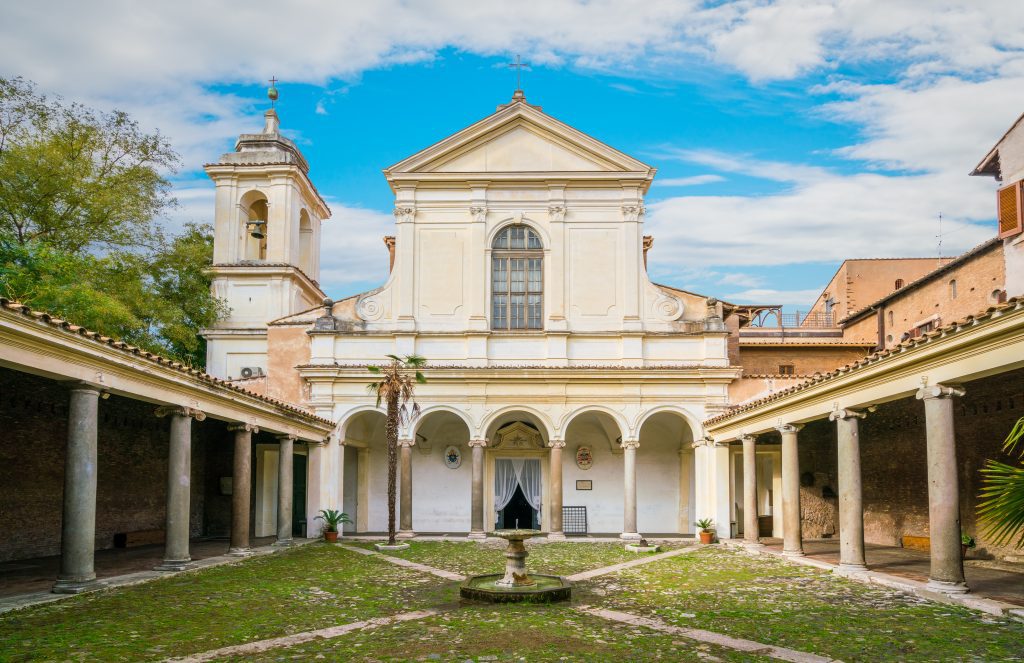
Overview: The Basilica of San Clemente is not just a church; it’s a fascinating historical layer cake. Situated a short distance from the Colosseum, this structure layers a 12th-century basilica over a 4th-century church, which itself stands above ancient Roman houses and a Mithraic temple.
Tickets: Entrance fees for adults are typically around €10. Concessions are available for children and groups. There’s no direct combo ticket, but city passes might include the Basilica.
Luggage Storage: The Basilica only permits small bags. There’s no official storage at the site, but nearby services can store larger items for a fee. It’s advisable to store big bags for a more comfortable visit.
Opening Hours: Generally from 9 am to 12:30 pm and then from 3 pm to 6 pm. These hours can vary based on religious events and the season.
Pre-purchase Tips: Tickets are usually purchased on-site. However, if aiming to combine visits, look for city passes that might include the Basilica.
Dodging the Crowd: For a quieter experience, aim for late weekday mornings. Sundays might be busier due to religious services.
Facilities & Accessibility: Restroom facilities are available. The site is not very wheelchair-friendly, especially the lower levels, due to its archaeological nature.
Dress Code: A modest dress code should be maintained. Cover knees and shoulders as it’s a place of worship.
Photography Rules: Photography is generally allowed, but flash is discouraged. Some sections might have restrictions.
Food & Drink: No food stalls inside the Basilica. However, numerous cafes and eateries can be found in the surrounding area.
Transport: The nearest metro is Colosseo on Line B. Multiple buses stop nearby. It’s also walkable from many central Roman attractions.
Medical Facilities: Several pharmacies are located close by. Always handy to keep a list of emergency numbers.
WiFi Access: No official WiFi at the Basilica. Nearby cafes might offer connectivity.
Average Visit Duration: Expect to spend around 1 to 1.5 hours, depending on personal interest.
Payment Modes: Primarily cash. There’s an ATM nearby for convenience.
General Tips: Considering a guide or guidebook can enhance your visit. Wear comfortable shoes and possibly carry a light jacket for the cooler underground sections.
Palatine Hill
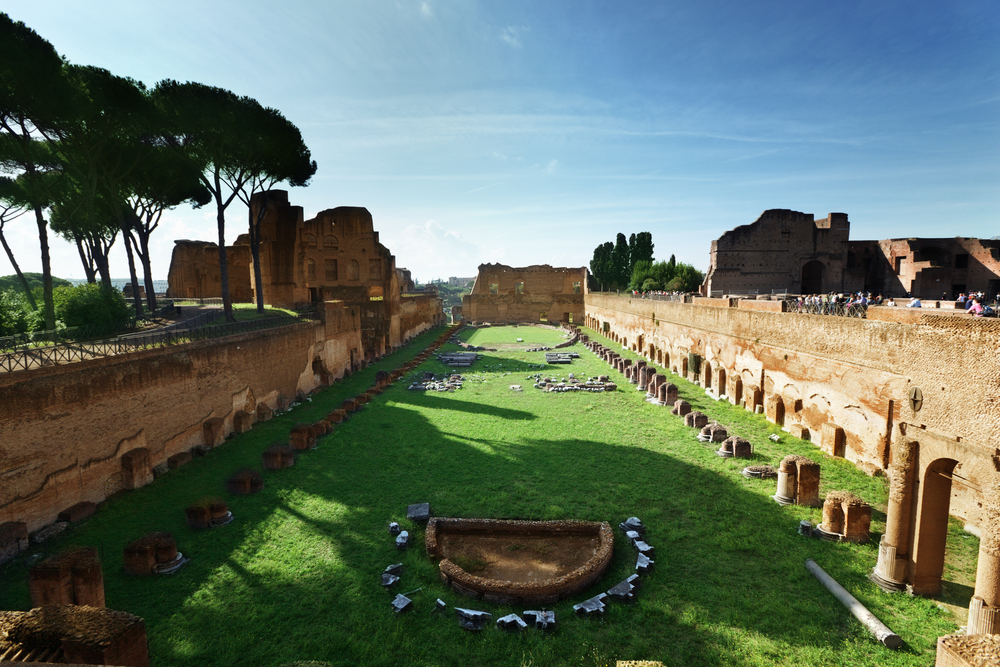
Overview: Palatine Hill is steeped in mythology and history. Legend has it that it was on this hill that Romulus and Remus were found by the she-wolf that nurtured them. Moreover, it was here that Rome was born. A walk through the ruins transports visitors back to a time of emperors and grandeur.
Tickets: Tickets to Palatine Hill typically also grant access to the Roman Forum and Colosseum. Prices for adults hover around €12-16, with concessions available for EU members and children. Combo deals often provide the best value for those wishing to explore adjacent sites.
Luggage Storage: Large bags are not permitted on Palatine Hill. While there’s no on-site storage, nearby services offer storage solutions. Traveling light enhances the experience, especially given the uneven terrain.
Opening Hours: The Hill is generally accessible from 8:30 am to 7 pm, but timings can change based on the season or special events. It’s always best to check in advance.
Pre-purchase Tips: Buying tickets online can save you time, especially during peak seasons. Trusted websites include the official CoopCulture site and authorized tour operators.
Dodging the Crowd: Early mornings and late afternoons, especially during weekdays, offer a more serene experience. Consider visiting off-peak seasons, like late fall or early winter.
Facilities & Accessibility: There are restrooms available. However, given the ancient and hilly terrain, not all areas are accessible to those with mobility challenges.
Dress Code: No particular dress code, but comfortable attire and shoes are a must given the walking involved.
Photography Rules: Photography for personal use is generally allowed. Restrictions might be in place for tripods and commercial shoots.
Food & Drink: No on-site food stalls, but there’s a plethora of dining options in the surrounding areas, from quaint cafes to traditional Italian restaurants.
Transport: The closest metro is Circo Massimo on Line B. Various buses also service the area. Walking from major landmarks like the Colosseum is also feasible.
Medical Facilities: Pharmacies are scattered around the nearby areas. It’s prudent to have a list of emergency contacts while traveling.
WiFi Access: No official WiFi on the Hill. Some nearby cafes might offer internet access.
Average Visit Duration: To fully soak in the history, expect to spend 2 to 3 hours.
Discover Italy Like a Local: Your Ultimate Public Transportation Guide(Opens in a new browser tab)
Payment Modes: The ticket counters accept both cash and cards. Several ATMs can be found around the neighboring areas.
General Tips: Guided tours can elevate the experience, offering insights into the layers of history. The terrain can be uneven, so sturdy shoes are a must. During summer, a hat, sunscreen, and ample water are essential.
Baths of Caracalla
These ancient Roman thermal baths offer an intimate glimpse into the social and daily life dynamics of Rome, revealing how citizens once gathered for leisure, wellness, and socialization.

Overview: Built during the reign of Emperor Caracalla, these baths are a testament to Roman engineering and the cultural importance of communal bathing. Their grand structures and intricate mosaics transport visitors back to a time when they served as both a place of relaxation and a center of social activity.
Tickets: Ticket prices range depending on the time of year and current events. Adult tickets typically range from €8-12, with discounts available for EU citizens under 25. There might also be combo deals allowing visits to other archaeological sites in Rome.
Luggage Storage: Larger bags or luggage aren’t typically allowed inside for conservation reasons. While there isn’t on-site luggage storage, nearby stations or businesses may offer these services. To best enjoy your visit, come unencumbered.
Opening Hours: Generally open from 9 am to 7 pm, though hours can vary based on seasons and special events. Always check the official site or trusted local sources before planning your visit.
Pre-purchase Tips: Purchasing tickets online can save time, especially during tourist season. CoopCulture and other trusted tourism websites are good platforms for pre-purchasing.
Dodging the Crowd: For a quieter experience, visit during early mornings or late afternoons on weekdays. Mid-fall to early spring sees fewer crowds.
Facilities & Accessibility: There are on-site restrooms. Due to the archaeological nature of the site, some areas might not be accessible for those with mobility issues.
Dress Code: There’s no specific dress code, but comfortable attire and walking shoes are recommended.
Photography Rules: Personal photography is generally allowed. However, commercial shoots, tripods, or flash might require permissions or be restricted in certain areas.
Food & Drink: There aren’t any food stalls within the Baths. However, the surrounding area has a variety of cafes and restaurants to choose from.
Transport: The nearest metro station is Circo Massimo on Line B. Buses also frequently service the area. There’s limited parking, so public transport or walking is advised.
Medical Facilities: There are several pharmacies in the vicinity. It’s wise to have a list of emergency numbers when traveling in Rome.
WiFi Access: No official WiFi at the Baths. Some nearby cafes or establishments might offer connectivity.
Average Visit Duration: Anticipate spending about 1.5 to 2 hours exploring the Baths and its grounds.
Payment Modes: Both cash and card are usually accepted for tickets and amenities. Nearby areas offer ATM services.
General Tips: Guided tours can offer richer insights into the history and architecture of the Baths. Comfortable footwear is crucial due to uneven ancient floors. As always in Rome, stay hydrated during hot months and carry a refillable water bottle.
Basilica di Santa Maria Maggiore
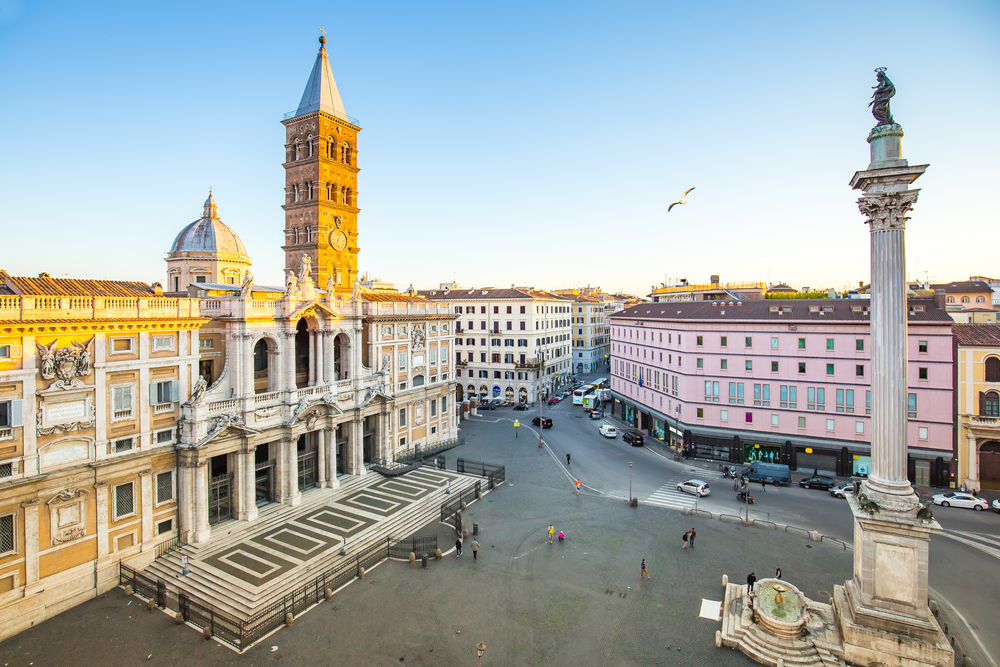
One of Rome’s four major basilicas, this church stands out for its breathtaking mosaics, intricate artworks, and significant religious history.
Overview: One of the major papal basilicas in Rome, the Basilica di Santa Maria Maggiore is an architectural and artistic marvel with origins dating back to the 5th century. The intricate mosaics adorning its walls and ceilings depict stories from the Old Testament, making it not just a place of worship, but also an artistic repository of Christian narratives.
Tickets: Entrance to the basilica is usually free, but there might be fees for certain areas like the museum or accessing the crypt. While there are no combo deals with other attractions, you can often find guided tours that include multiple religious sites.
Luggage Storage: Large bags aren’t permitted inside the basilica. There isn’t an on-site storage facility, so visitors are advised to store large items at their accommodation or utilize luggage storage services in the city.
Opening Hours: Open daily from about 7 am to 7 pm, though timings can vary on religious holidays or special occasions.
Pre-purchase Tips: While you don’t need to purchase tickets, consider booking guided tours online for deeper insights into the basilica’s history.
Dodging the Crowd: To experience the basilica in relative tranquility, aim for early morning or late afternoon on weekdays.
Facilities & Accessibility: Restrooms are available for visitors. The main areas of the basilica are accessible, but some parts may be challenging for those with mobility issues.
Dress Code: Modest attire is required. Ensure shoulders and knees are covered, and hats should be removed upon entering.
Photography Rules: Personal photography without flash is typically allowed, but respect worshipers and refrain from taking photos during services. Commercial shoots or the use of tripods may be restricted.
Food & Drink: There aren’t food stalls within the basilica. However, its central location means a plethora of cafes and restaurants surround it.
Transport: The nearest metro station is Termini. Multiple bus routes service the area. Limited street parking is available, so walking or public transport is recommended.
Medical Facilities: Numerous pharmacies are within walking distance. Always keep a list of emergency numbers while traveling.
WiFi Access: The basilica doesn’t offer public WiFi. However, some nearby cafes might.
Average Visit Duration: Allocate between 1 to 2 hours, especially if you’re keen on examining the mosaics and artworks in detail.
Payment Modes: Small fees for special sections or services can be paid in cash or card. There are ATMs in the surrounding area.
General Tips: Guided tours are highly recommended for a comprehensive understanding of the basilica’s history and significance. Comfortable shoes are a must as you’ll be walking on marble and stone floors. Stay hydrated, especially in summer, and consider carrying a water bottle.
Capitoline Museums
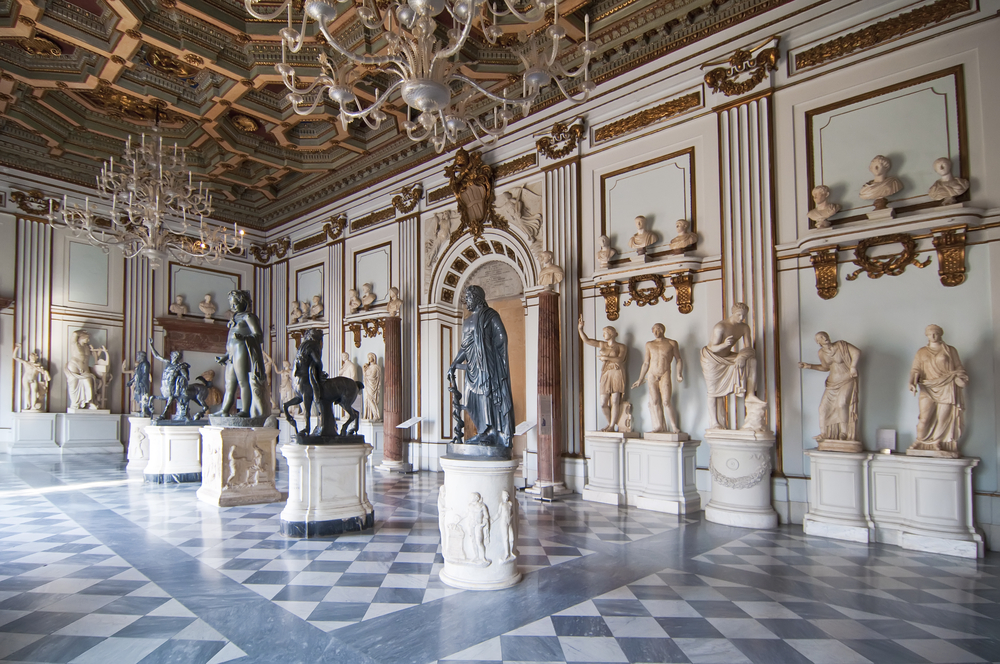
Nestled atop the iconic Capitoline Hill, these museums are a treasure trove of ancient Roman art and artifacts, showcasing the grandeur of a bygone era.
Overview: Situated on one of Rome’s seven hills, the Capitoline Museums represent one of the world’s oldest museum complexes. The rich collection housed here provides a comprehensive insight into Roman history, art, and culture. From ancient sculptures to Renaissance paintings, every visitor to Rome is taken on a historical journey when visiting these museums.
Tickets: Prices vary, with reductions for children, seniors, and groups. Combo tickets that include other city attractions might be available. Check online or on-site for current rates.
Luggage Storage: Large bags and backpacks are typically not permitted inside the museums. Storage facilities are available at the entrance, with nominal fees depending on bag size.
Opening Hours: The museums generally open from 9:30 am to 7:30 pm, with some seasonal variations. Note: They may be closed on certain public holidays or for special events.
Pre-purchase Tips: Buying tickets online can save you from long queue times, especially during peak seasons. Make sure to use the official museum website or other trusted platforms.
Dodging the Crowd: To avoid large crowds, consider visiting during the shoulder months of spring and fall or aim for weekday mornings.
Facilities & Accessibility: Restrooms and luggage storage are conveniently located near the entrance. The museums are wheelchair accessible, and elevators are available for various levels.
Dress Code: There’s no strict dress code, but a respectable attire is appreciated given the cultural significance of the museums.
Photography Rules: Personal photography is usually permitted, but without flash. Some special exhibitions may have restrictions. The use of tripods often requires prior permission.
Food & Drink: While there’s a café within the museum complex offering light refreshments, numerous restaurants and cafes surround the hill, catering to diverse tastes.
Transport: The closest metro is Colosseo on Line B. Several bus lines also serve the area. Limited parking zones are available, so public transportation is recommended.
Medical Facilities: While there’s no on-site pharmacy, several are located within a short distance of Capitoline Hill. Always have a list of local emergency numbers handy.
WiFi Access: Free WiFi is typically available in the museum complex. Some areas might require a quick registration or login.
Average Visit Duration: Spend around 2 to 4 hours for a comprehensive tour, but true art and history enthusiasts might linger longer.
Payment Modes: Most accepted methods include cash, credit cards, and some digital wallets. Several ATMs are found in the vicinity.
General Tips: Engaging in guided tours can significantly enhance the museum experience. Remember to wear comfy shoes, as you’ll be walking quite a bit. Staying hydrated is key, so consider having a water bottle with you.
Galleria Borghese
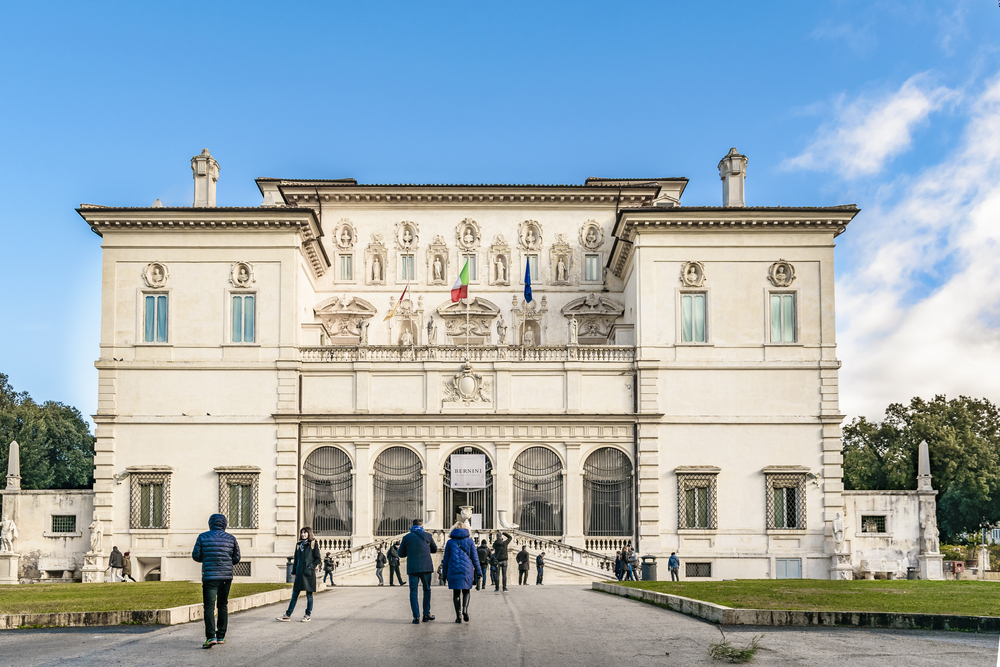
A masterpiece of a gallery, the Galleria Borghese boasts an unrivaled collection of works from renowned artists such as Bernini, Caravaggio, and Raphael.
Overview: Nestled within the lush Borghese Gardens, the Galleria Borghese is one of Rome’s premier art galleries. It showcases a stunning amalgamation of sculpture, painting, and antiquities. Visitors are treated to a unique journey through art history, witnessing the genius of some of the Renaissance and Baroque periods’ most prominent figures.
Tickets: Ticket prices fluctuate based on age and group size. There may also be combo options that allow access to additional attractions within the Borghese Gardens. For the most accurate and updated pricing, one can refer to the official website or inquire on-site.
Luggage Storage: Large bags aren’t typically allowed inside. Convenient storage facilities are available at the entrance for a nominal fee, ensuring the art is protected and your visit is unencumbered.
Opening Hours: The gallery is generally open from 9:00 am to 7:00 pm, but times may vary seasonally. Special events or maintenance might occasionally affect these hours.
Pre-purchase Tips: Considering the gallery’s popularity, purchasing tickets in advance is a wise move. The official Galleria Borghese website is the best platform for this, ensuring authenticity and timely updates.
Dodging the Crowd: Early mornings during weekdays or during the shoulder seasons of spring and fall are ideal to avoid heavy crowds.
Facilities & Accessibility: Restrooms and luggage storage are located near the entrance. The gallery is equipped to cater to differently-abled visitors, with appropriate access routes and available elevators.
Dress Code: While there’s no stringent dress code, visitors are encouraged to dress respectfully, keeping in line with the gallery’s esteemed reputation.
Photography Rules: Photography for personal use is generally permitted, but flash and tripods might be restricted. Always adhere to specific rules for special exhibitions.
Food & Drink: The gallery’s vicinity in Borghese Gardens ensures several cafes and eateries are close by, perfect for a post-visit refreshment or meal.
Transport: The closest metro station is Spagna. Several buses also cater to the area. Given the central location, parking can be limited; hence, public transportation or walking is recommended.
Medical Facilities: There might not be an on-site pharmacy, but numerous options are available nearby. As always, having emergency contact numbers on hand is beneficial.
WiFi Access: While the gallery might offer limited free WiFi, it’s always best to check the current availability and any potential login requirements upon arrival.
Average Visit Duration: Approximately 2-3 hours should suffice for a thorough appreciation, though art aficionados might want to linger longer.
Payment Modes: The gallery accepts cash, most major credit cards, and some digital payment methods. ATMs are also conveniently located in the area.
General Tips: Opting for a guided tour can significantly enrich the experience, offering deeper insights into the displayed works. Comfortable footwear is essential, given the amount of walking. Lastly, always keep hydrated and take breaks as needed.
Catacombs
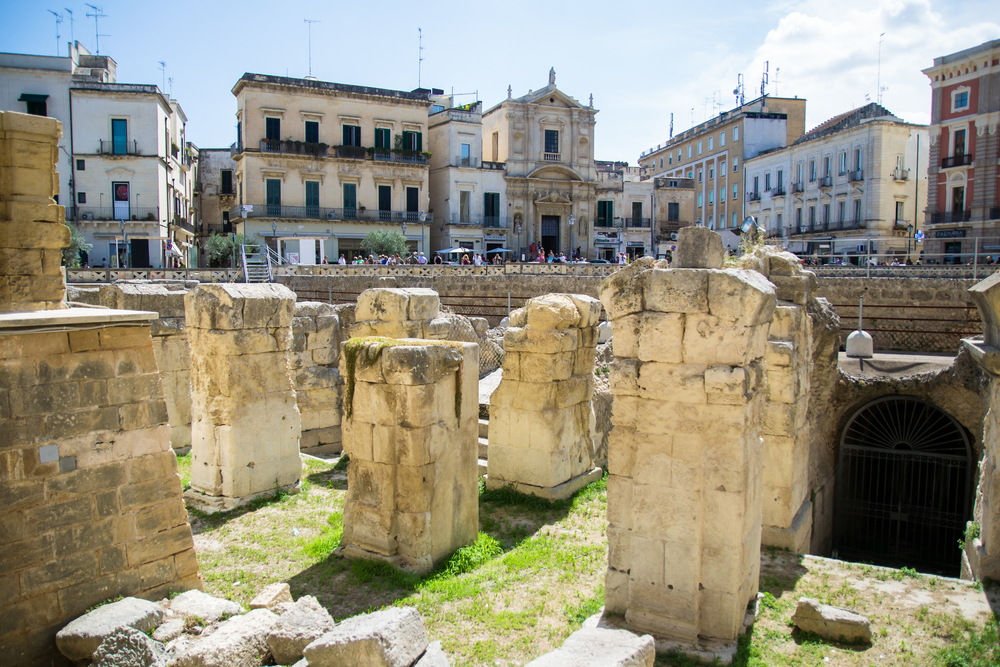
Rome’s eerie yet fascinating underground burial chambers that have stood witness to the ancient city’s religious and cultural evolution.
Overview: The Catacombs of Rome are an intricate network of underground passageways that served as burial sites for early Christians, Jews, and pagans. Places like the Catacombs of San Callisto and Catacombs of Priscilla stand as testament to the rich tapestry of Rome’s religious history. These subterranean cemeteries offer an introspective view into the rituals and beliefs of ancient civilizations.
Tickets: Pricing for entry varies based on the specific catacomb. Discounts are generally available for children, seniors, and groups. Some Catacombs might offer combination tickets with other religious sites or attractions. It’s advisable to check individual catacomb websites or inquire on-site for current pricing.
Luggage Storage: Due to the nature of the catacombs, large bags or bulky items are typically not allowed. Storage options may be available at the site entrance.
Opening Hours: Most catacombs are open from 9:00 am to 5:00 pm but may vary slightly depending on the season. They may also be closed on specific religious or public holidays.
Pre-purchase Tips: While not always necessary, buying tickets in advance can save time, especially during peak tourist seasons. Trusted websites or partnering travel agencies are preferable for pre-purchases.
Dodging the Crowd: Visiting during the offseason, typically late autumn or winter, might result in a quieter experience. Early mornings are also less crowded.
Facilities & Accessibility: Restrooms are available at most catacomb sites. Given the subterranean nature of the catacombs, accessibility for differently-abled visitors may be limited.
Dress Code: Out of respect for these religious sites, visitors should dress modestly. This typically means covering knees and shoulders.
Photography Rules: In many catacombs, photography might be restricted to preserve the sanctity of the space and the art. Always check site-specific rules upon entry.
Food & Drink: There may not be food stalls directly within the catacombs, but several might be found in the surrounding areas or at the entrance.
Transport: The catacombs are spread around Rome, so public transportation, like buses, may be the most efficient. Some might also be accessible through organized tours which provide transport.
Medical Facilities: There won’t be on-site medical facilities, but there are numerous pharmacies and medical centers in Rome.
WiFi Access: Free WiFi might not be available within the catacombs due to their underground nature.
Average Visit Duration: A standard tour of the catacombs usually lasts between 1 to 1.5 hours.
Payment Modes: Accepted methods include cash and credit cards. It’s always a good idea to carry some cash for smaller sites or services.
General Tips: Guided tours provide rich insights and historical context, elevating the experience. Wearing comfortable shoes is essential due to the uneven underground paths. Additionally, the catacombs maintain a cooler temperature, so carrying a light jacket might be beneficial.
Rome, the eternal city, is brimming with historic sites and artistic treasures. While individual tickets can be purchased for each attraction, the city offers various cards and passes to make sightseeing more convenient and economical for visitors. Here’s a breakdown of some of the most popular options:
Cards and Passes
1. Roma Pass:
- Benefits: This card entitles holders to free entry at their choice of the first 1 or 2 museums or archaeological sites. After that, it provides discounts at several other participating venues.
- Transport: Enjoy the freedom to travel with complimentary access to Rome’s public transport network, excluding trains to/from airports.
- Duration: Choose between two validity periods based on your stay: the 48-hour or the 72-hour version.
2. OMNIA Vatican and Rome Card:
- Combined Attractions: A comprehensive card that merges the benefits of the Roma Pass with additional privileges. Get entrance to the famed Vatican Museums, marvel at the Sistine Chapel, and utilize the hop-on-hop-off bus tour to view the city from a different perspective.
- Convenience: Bypass the lengthy queues with “skip the line” access at numerous high-traffic attractions.
3. Roma City Pass:
- Signature Sites: Don’t miss out on Rome’s iconic landmarks. This pass grants “skip the line” entries to the Colosseum, Vatican Museums, and the intricate Sistine Chapel.
- Extra Perks: Make your journey smoother with an included airport transport option and explore the city at your pace with the hop-on-hop-off bus tour.
4. Roma Archeologia Card:
- For History Buffs: Dive deep into Rome’s ancient past. This card unlocks several archaeological sites and museums, including the imposing Colosseum, the historically rich Palatine Hill, and the serene Baths of Caracalla.
5. Transport Card:
- Purely Practical: If your main concern is commuting, then this is the card for you. It offers unlimited rides on public transportation for a certain duration, ranging from a quick 24-hour stint to an extended week-long journey of 7 days.
To make the most of your Roman holiday, evaluate the length of your stay, and decide which sites top your must-visit list. Based on that, you can choose the card that offers the best value and convenience for your travel style. Don’t forget to check the card’s validity and any additional benefits it might come with. Safe travels!
Useful Italian Phrases for Tourists at Attractions
When visiting Italy, having a basic understanding of some key phrases can greatly enhance your experience and interactions with the locals. Here’s a list of essential Italian phrases tailored for tourists at attractions:
- Greetings & Basics:
- Hello: Ciao (Informal) / Buongiorno (Good morning/afternoon) / Buonasera (Good evening)
- Please: Per favore
- Thank you: Grazie
- Yes: Sì
- No: No
- Excuse me / I’m sorry: Mi scusi / Mi dispiace
- At the Entrance:
- How much is the entrance fee?: Quanto costa il biglietto d’ingresso?
- Where can I buy tickets?: Dove posso comprare i biglietti?
- I would like [one/two/three] ticket(s) please: Vorrei [uno/due/tre] biglietto(i), per favore.
- Asking for Directions:
- Where is the entrance / exit?: Dov’è l’ingresso / l’uscita?
- Is this the line for…?: Questa è la fila per…?
- How do I get to…?: Come arrivo a…?
- Where is the restroom?: Dov’è il bagno?
- During a Tour:
- Can you explain this?: Può spiegare questo?
- What does that mean?: Cosa significa?
- Is photography allowed?: Si possono fare fotografie?
- Is there a guided tour?: C’è una visita guidata?
- Time & Scheduling:
- What time does it open / close?: A che ora apre / chiude?
- How long is the tour?: Quanto dura la visita?
- Dining & Refreshment at Attractions:
- Where is the nearest restaurant/cafe?: Dov’è il ristorante/café più vicino?
- I’d like a coffee/water, please: Vorrei un caffè/una acqua, per favore.
- Do you have a menu in English?: Avete un menù in inglese?
- Emergencies:
- I need help: Ho bisogno di aiuto
- Is there a pharmacy nearby?: C’è una farmacia qui vicino?
Equipped with these phrases, you’ll be better prepared to navigate and enjoy the myriad attractions Italy has to offer. Remember, most Italians appreciate when tourists make an effort to speak their language, even if it’s just a few words. Buon viaggio! (Have a good trip!)
Conclusion
Italy, with its rich history, awe-inspiring architecture, and captivating culture, is a treasure trove for travelers. While its attractions speak for themselves, engaging with locals in their native tongue can truly enhance one’s experience. These essential phrases, tailored for tourists at attractions, serve as a handy tool to break the ice, ask for assistance, and deepen one’s connection with the beautiful country and its welcoming inhabitants. As the saying goes, “When in Rome, do as the Romans do.” So, why not speak a little Italian too? Embrace the beauty of the Italian language, and let it be the golden key that unlocks an even more memorable travel experience. Buon viaggio and enjoy every moment of your Italian adventure!

